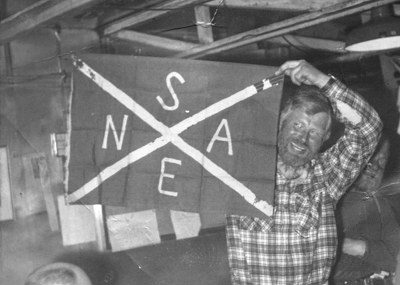
| Glasgow Digital Library | Voyage of the Scotia | BRUCE | PEOPLE | SHIP | ANTARCTIC | INDEX |
|---|
Few people in the British Isles at the beginning of the twentieth century had the knowledge and expertise of William Speirs Bruce when it came to working in polar conditions.

Bruce had applied to join the British National Antarctic Expedition in April 1899 (the Discovery expedition to be led by Robert Scott). He sent his application to Sir Clements Markham (president of Royal Geographical Society) but it was not until March 1900 that he was accepted as an assistant scientist. This was too late.
Bruce had always dreamed of leading an expedition to the Antarctic and in 1899 plans began for a Scottish National Antarctic Expedition. Markham was furious as he thought this would divert funds from the British expedition. He accused Bruce of 'mischievous rivalry'. The Scottish expedition was financed in Scotland, had mainly Scottish scientists aboard and a Scottish crew.
The major contributor to the expedition was the Coats family of Paisley, very wealthy thread manufacturers who were interested in scientific work. They founded the Coats Observatory in Paisley (where meteorological readings are still made) and had led their own expeditions to the Arctic. The huge red brick building seen when entering Paisley from Glasgow belonged to the Coats family. Bruce sailed on one of their yachts - Blencathra - to the Arctic in 1898.
Major Andrew Coats gave the Scottish National Antarctic Expedition £5,000, then another £2,000, while his younger brother gave £24,000. £31,000 out of the £36,405 Bruce raised came from the Coats family. This sum was considerably less than the £90,000-plus raised for the British expedition on Discovery.
| Glasgow Digital Library | Voyage of the Scotia | BRUCE | PEOPLE | SHIP | ANTARCTIC | INDEX |
|---|